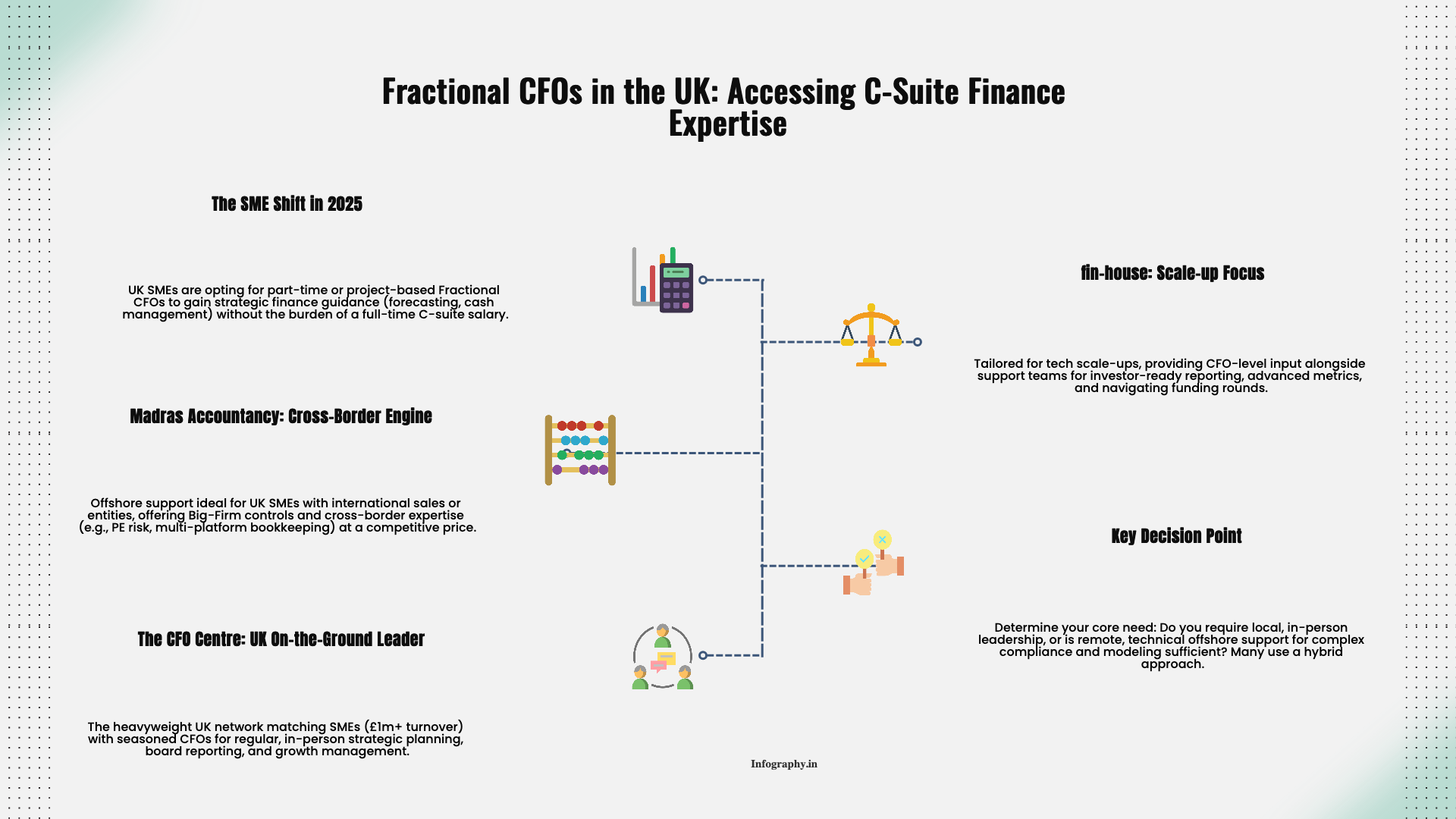Bringing in a fractional CFO can feel like a big step. You now have access to senior level financial thinking, at least on paper. Whether that turns into better decisions and calmer planning depends on how you use the relationship.
Think of your fractional CFO less as a vendor and more as part of the leadership team, even if they are only there a few hours a week.
Instead of starting with a vague mandate like "help us with finance," agree on a handful of specific outcomes. Examples might include building a rolling cash flow forecast, tightening budget processes, preparing for a lender meeting, or mapping a path to profitability.
Write these goals down and revisit them in your regular check ins. This keeps the engagement focused and gives everyone a way to measure progress.
A CFO cannot do much with stale or unreliable numbers. If your bookkeeping is three months behind or reconciliations are spotty, part of the early agenda may need to be cleaning that up. It is not glamorous work, but it is hard to steer a ship when the gauges are fuzzy.
Make sure your fractional CFO has access to your accounting system, billing tools, and any key operational dashboards. The more they can see directly, the less time they spend asking for basic reports.
If you only call your fractional CFO after major decisions are made, you miss much of their value. Invite them to planning discussions where pricing, hiring, product expansion, or financing come up.
They do not need to attend every meeting, but when the stakes are high or the numbers are complex, having them in the room from the start can prevent rework later.
A common problem with financial reporting is overload. You do not need a fifty page deck every month. Instead, work with your CFO to design a short recurring package that highlights a few key metrics and trends you care about.
Maybe that is a one page dashboard plus a brief narrative. The point is to create a rhythm where everyone expects to review the same core information on a regular schedule, rather than scrambling for custom reports ad hoc.
A fractional CFO can propose all kinds of models and scenarios. The useful ones respect your real constraints: cash, time, staffing, and risk tolerance. The more candid you are about those boundaries, the more practical their advice will be.
If a suggestion looks good theoretically but feels unrealistic, say so. That opens the door to adjusting the plan instead of quietly ignoring recommendations.
Many CFO tasks involve both design and execution. For example, they might design a new budgeting process, but someone still has to run it month by month. Clarify which pieces your internal team will own and which pieces the CFO will continue to handle.
This avoids the pattern where ideas are discussed repeatedly but stall because everyone assumes someone else is driving them forward.
Every few months, set aside time to talk about how the engagement is working. Are you getting what you expected? Has the scope drifted? Do upcoming milestones, like fundraising or expansion, require adjusting hours or focus?
A fractional CFO relationship should evolve with the business. Regular check ins keep it aligned with where you are now, not where you were when you first signed the agreement.
Done well, this kind of partnership turns financial questions from background stress into structured conversations. That change alone can free up a surprising amount of mental space for running the rest of the business. For more insights on the evolving CFO role, explore our comprehensive guide.
.png)
December 9, 2025
A straight-talking overview of five small business tax prep options in 2025, including Madras Accountancy, TurboTax, H&R Block, TaxSlayer, and Bench’s books-plus-tax model.

December 9, 2025
An on-the-ground guide to the UK’s fractional CFO ecosystem – London and beyond – including The CFO Centre, fin-house, FD Capital, BKL, BSmart, and how Madras Accountancy fits into cross-border and hybrid models.